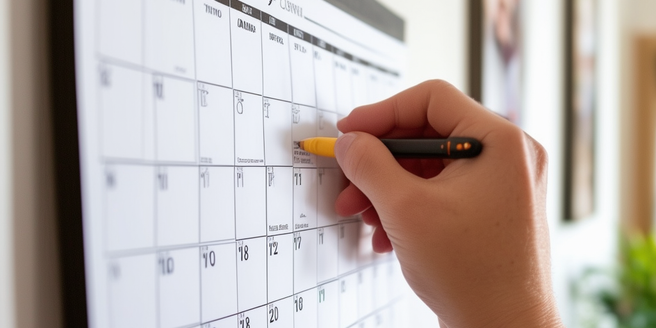
Benefits of Using a Family Calendar
Using a family calendar can greatly improve organization and reduce stress. By having a single place where all family activities are logged, everyone knows what to expect and when. This tool can be particularly helpful for large families with multiple busy schedules. It also helps in avoiding scheduling conflicts and ensures that no one’s commitments are overlooked. Additionally, it makes it easier to coordinate carpooling, extracurricular activities, and family events. A shared calendar can foster better communication and collaboration within the family, helping everyone stay on the same page and making family management smoother and more efficient. In this way, family members can plan ahead and allocate time for each other without unanticipated interruptions.
Choosing the Right Calendar for Your Family
Selecting the appropriate calendar for your family is crucial for its success. Consider whether a digital or paper-based system works best for your lifestyle. A digital calendar offers the convenience of being accessible from multiple devices and can send reminder notifications. Additionally, many digital calendars can integrate with voice assistants, making it even easier to manage by using voice commands. It’s also easier to share and sync schedules with other family members. On the other hand, a paper calendar can be more tangible and serve as a constant visual reminder when placed in a common area like the kitchen. Whichever option you choose, ensure that it is user-friendly and easily accessible to all family members to maximize its effectiveness.
Setting Up Your Family Calendar
Setting up a family calendar involves a few key steps. Begin by identifying all recurring events such as work schedules, school activities, and regular appointments. Add these to the calendar first. Ensure that the format you choose is accessible to everyone, whether it’s digital or a physical calendar. Next, include special events like vacations, birthdays, and family outings. Make sure to involve all family members in this process to ensure no detail is overlooked. Color-coding can be a helpful way to distinguish between different types of activities and responsibilities. Finally, set reminders for important dates to keep everyone on track. Once everything is entered, review the calendar together to make sure it reflects everyone’s commitments accurately.
Tips for Keeping the Calendar Updated
Maintaining an up-to-date family calendar requires regular effort. Encourage everyone to add new events as soon as they arise. Set a weekly family meeting to review and update the calendar together, ensuring that any changes or new events are communicated clearly. This practice helps in anticipating any potential scheduling conflicts. Utilizing color-coding can make it easier to differentiate between various types of events and appointments. Utilize reminders and alerts to keep track of important dates and deadlines. For digital calendars, enable synchronization across devices so that any updates are visible to all. Make sure the calendar is easily accessible to foster its regular use. Consistency is key; by making calendar updates a habit, you can prevent scheduling conflicts and keep everyone informed.
Involving Everyone in the Family Planning
Involving all family members in the planning process ensures better adherence to the family calendar. Assign each person the responsibility of adding their own activities and commitments. This encourages accountability and makes sure that everyone’s schedule is considered. Holding regular family meetings can also foster communication and collaboration, allowing for a more balanced distribution of tasks and responsibilities. These meetings can be a good time to discuss any changes or upcoming events. Additionally, having a clear and consistent routine can greatly benefit everyone’s time management skills. By giving everyone a voice in the planning process, you create a sense of ownership and teamwork, making it easier to stay organized and connected as a family.
